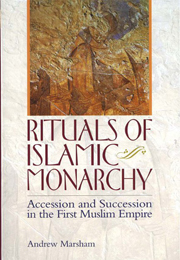Book contents
- Frontmatter
- Contents
- List of maps and figures
- Acknowledgements
- Map 1
- Map 2
- Map 3
- INTRODUCTION
- PART I LATE ANTIQUE ARABIA AND EARLY ISLAM (c. 550–c. 660)
- INTRODUCTION
- 1 ALLIANCE AND ALLEGIANCE IN PRE-ISLAMIC ARABIA
- 2 THE VERB BĀYAcA IN THE QURɔĀN: ALLEGIANCE TO MUḤAMMAD
- 3 THE OATH OF ALLEGIANCE IN THE ‘CONQUEST SOCIETY’ (c. 628–c. 660)
- PART II THE UMAYYAD CALIPHATE (c. 660–750)
- PART III THE EARLY ABBASID CALIPHATE (c. 750–809)
- PART IV THE MIDDLE ABBASID CALIPHATE (809–865)
- CONCLUSION
- Genealogical table of Quraysh
- Genealogical table of the Abbasid caliphs
- Bibliography
- Index
3 - THE OATH OF ALLEGIANCE IN THE ‘CONQUEST SOCIETY’ (c. 628–c. 660)
from PART I - LATE ANTIQUE ARABIA AND EARLY ISLAM (c. 550–c. 660)
Published online by Cambridge University Press: 05 September 2013
- Frontmatter
- Contents
- List of maps and figures
- Acknowledgements
- Map 1
- Map 2
- Map 3
- INTRODUCTION
- PART I LATE ANTIQUE ARABIA AND EARLY ISLAM (c. 550–c. 660)
- INTRODUCTION
- 1 ALLIANCE AND ALLEGIANCE IN PRE-ISLAMIC ARABIA
- 2 THE VERB BĀYAcA IN THE QURɔĀN: ALLEGIANCE TO MUḤAMMAD
- 3 THE OATH OF ALLEGIANCE IN THE ‘CONQUEST SOCIETY’ (c. 628–c. 660)
- PART II THE UMAYYAD CALIPHATE (c. 660–750)
- PART III THE EARLY ABBASID CALIPHATE (c. 750–809)
- PART IV THE MIDDLE ABBASID CALIPHATE (809–865)
- CONCLUSION
- Genealogical table of Quraysh
- Genealogical table of the Abbasid caliphs
- Bibliography
- Index
Summary
The thirty-two years between c. 628 and c. 660 witnessed the spectacular military and diplomatic success of the monotheist polity that had been founded after Muḥammad's emigration from Mecca to Yathrib (later Medina) in 622. In the last few years of his life (c. 628–32) Muḥammad consolidated his authority over Yathrib/Medina, brought most of the Ḥijāz into federation and began to extend his influence to other parts of the Arabian Peninsula. During the next three decades, those who succeeded him presided over the conquest of the rest of the Peninsula, the defeat of Sasanian Iran and the annexation of the Roman provinces of Egypt (Ar. Miṣr) and Oriens (Ar. Bilād al-Shām, often referred to as ‘Syria’). Then, with the slowing of military expansion in the 650s, consensus over the leadership of the Muslim polity began to break down, culminating in the civil war of 656–61, after which Damascus, in Syria, eclipsed Medina as the new capital of the empire.
During these three decades of spectacular expansion and conflict many of the religio-political institutions of the early Muslim empire came into being, among them the ‘caliphate’ (khilāfa) and the ‘pledge of allegiance’ (bayca, mubāyaca), by which the caliphate's incumbent was recognised as the ‘commander of the faithful’ (amīr al-muɔminīn) or ‘caliph’ (khalīfa, ‘successor’ or ‘deputy’). The quranic evidence, and other evidence for the milieu in which Muḥammad lived and preached, indicate that these pledges were a fusion of long-standing, pre-Islamic religio-political custom with late antique monotheist ideas about leadership and authority.
- Type
- Chapter
- Information
- Rituals of Islamic MonarchyAccession and Succession in the First Muslim Empire, pp. 60 - 78Publisher: Edinburgh University PressPrint publication year: 2009

